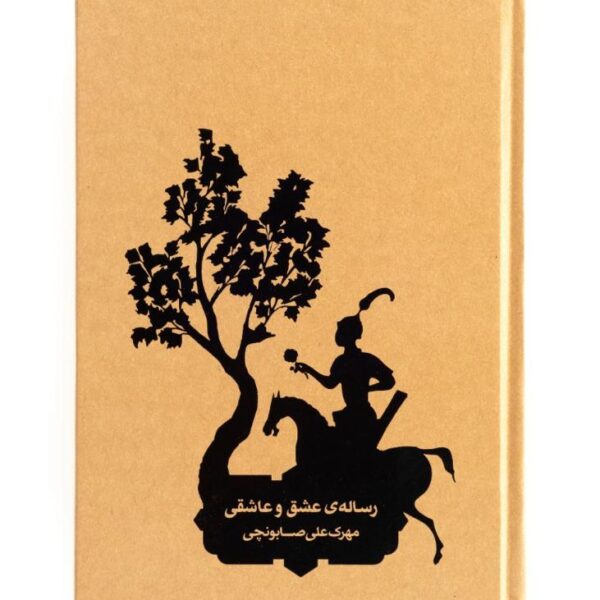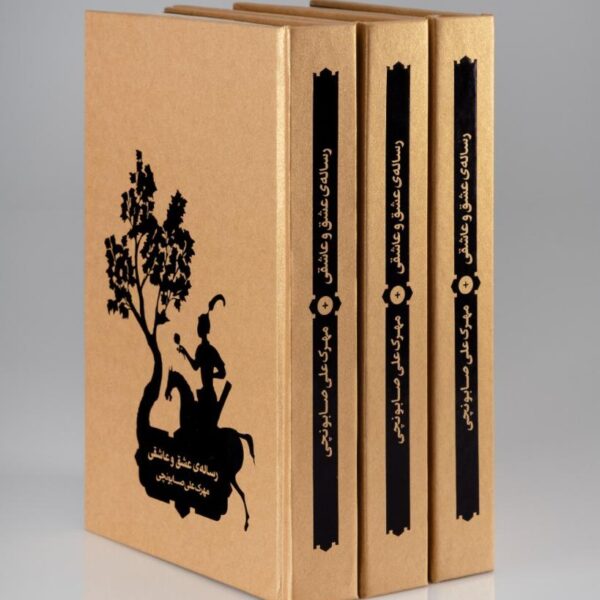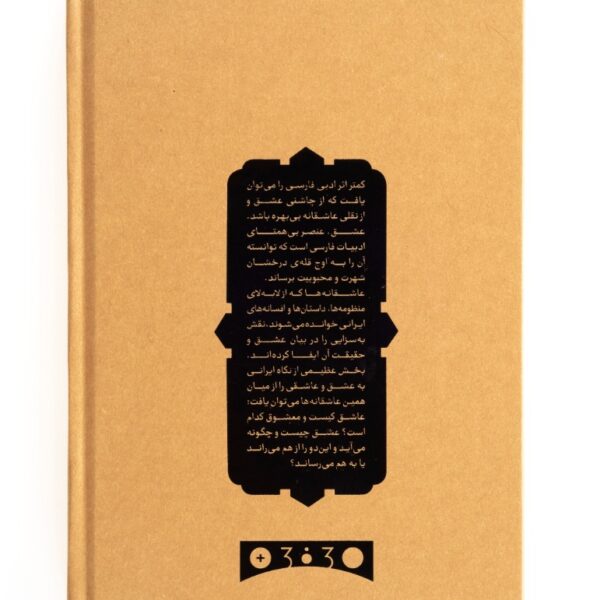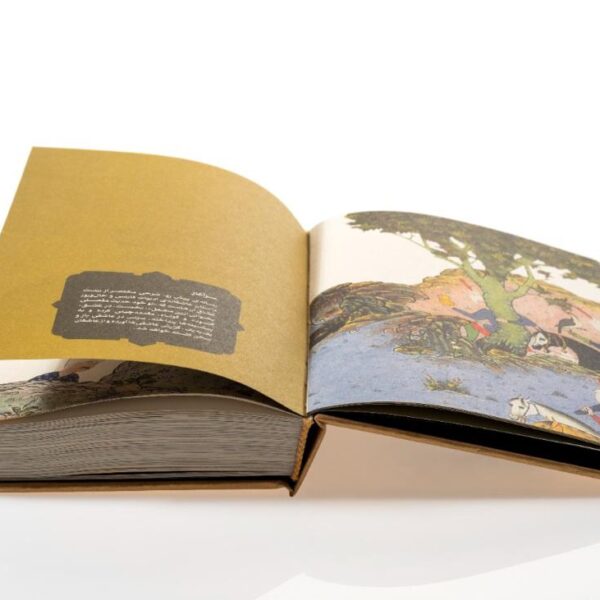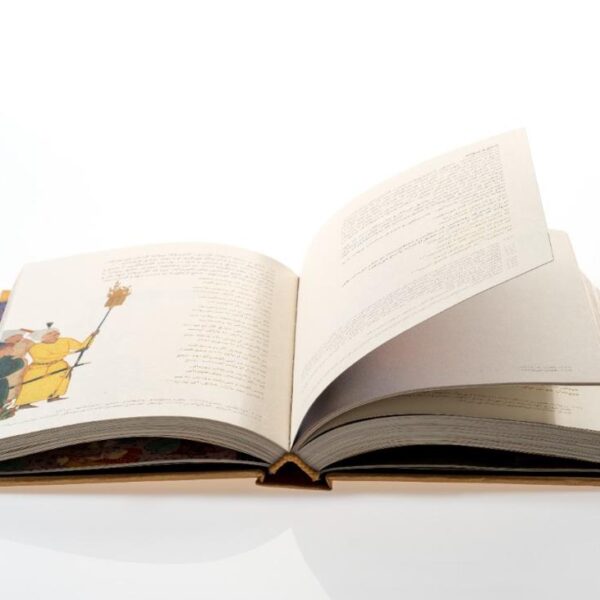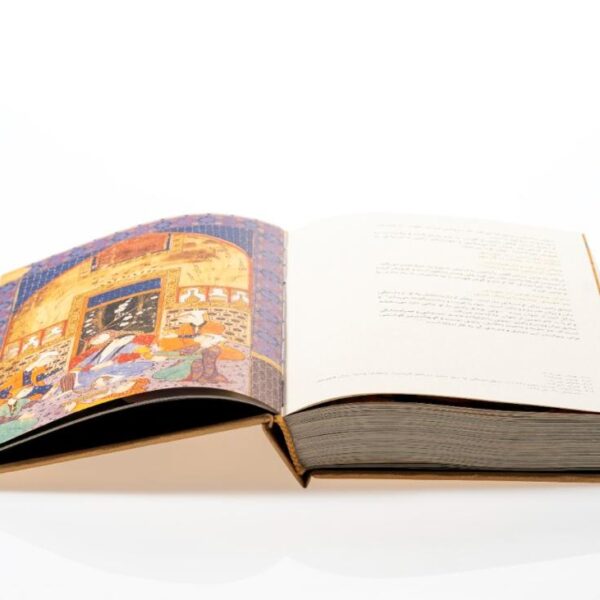Story
The treatise of Love and Love Affair is among the artistic and cultural projects of +3:30. Through the reinterpretation of the old literature and paintings, +3:30 is an invitation to text-wearing; it is an attempt to promote thought and knowledge by the means of visual narration, founded on the beliefs and mundane lives of people. This treatise has been published in 170 pages, in Tabl Space, and has been launched along with +3:30’s collection of “Love and Love Affair.” This treatise is a brief description of twenty romantic tales from Persian literature, along with an account of the circumstances of the lovers; “catch the whole concept from this brief content.” First, the “door of Love” opens and brings up a short introduction by studying the past, and then the “door of Love Affairs” opens with a one by one description of the Iranian love affairs and an account of the lovers’ circumstances. With opening the “door of Love,” the author studies Iranian poems and prose that enjoy romantic themes, concluding that Iranian old texts, especially literary ones, are so rich in romance that one can assume that Iranian culture is the “culture of love,” and thus, Iranian literature is the “literature of love and love affairs.” Since every culture creates its own particular myths as a means of expressing its approach towards various concepts, thoughts, and emotions, every culture expresses the question of love in a different way. In order to demonstrate these differences, this treatise presents myths from China, India, Mesopotamia, and Greece, followed by ancient Iranian texts. Subsequently, it studies the etymology of words bearing the meaning of “love and affection” in their essence, re-stating the scarce and scattered Zoroastrian texts on love, written in Pahlavi. Moreover, it also states the theories that examine whether the question of love existed in ancient Iranian culture, concluding that the absence of written texts about love and love affairs in ancient Iranian languages is a result of pre-Islamic Iranians’ self-restraint to confront love. Followed by interpreting ancient texts, the author studies the meaning of the world “Eshgh” (meaning Love in Persian), its etymology and origins. He delves into Iranian literature to look for the traces of love in Iranian poems and interprets the viewpoint of the poets, from a century to another, mentioning the similarities and differences of their viewpoints, namely those of Rumi, Saadi, and Hafez. When the “door of Love Affairs opens,” author examines differences in the clarity and complication of Iranian romantic stories and poems throughout the time. He values for the effect of Iranian literary type on the creation of love stories. Therefore, he introduces the aims of the epics, didactic, and lyrical literature, as the main Iranian literary types, followed by studying the differences of romantic themes and concepts shaped in each framework. The main theme of love stories, regarding being terestial vs. celestial and homosexual vs. heterosexual, is also studied chronologically. Regarding theme, the love stories are categorized in four type of epics, pure romantic, popular romantic, and allegorical romantic. The historical and geographical origins, as well as the ending of the stories, are also subjects of this research. Finally, the similarities in the structure and theme of the love affairs are carried out and the most frequent romantic themes are mentioned. After all the above-mentioned studies, Iranian love affairs that are so-called “terrestrial” are examined thoroughly. This treatise involves both common and less-known love stories, including a brief summary of each story together with the description of their literal and historical origins and the characteristics of the lovers. The love stories carried out in this treatise are stated as follows: Badr Basim and Jaurahah, Bahrām and Golandām, Bijan and Manijeh, Khosrow and Shirin, Rostam and Tahmineh, Zāl and Roudabeh, Zohreh and Manouchehr, Sām and Paridokht, Sarv and Tazarv, Salāmān and Absāl, Seyf ol-Molouk and Badi’ ol-Jamal, Sham’ and Parvaneh, Farhād and Golestān, Gol and Bolbol, Leili and Majnoun, Mehr and Moshtari, Nazer and Manzour, Vāmegh and Ozra, and Vis and Rāmin. Since each person has his or her own love story, the “door of love affairs” never closes. Finally, the treatise discusses “falling in love” and “enduring love.” The lover, after the exceptional experience of joy, sorrow, and ups and downs, caused by love, becomes a different person. His perception from the world, being, and even from his own existence changes; “he lives love and loves living.” This is the power of love that offers anew and true life to the lover.
